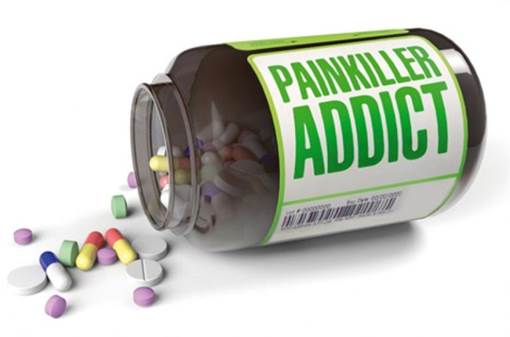Painkillers can ease some kinds of pain, but
you need to be careful to use them.
According to statistics, there’re 50% of
patients who see doctors because of pain symptoms. Pain killers are just used
for treating symptoms, but we still need to use them. However, lots of research
shows that the majority of people who use pain killers not only use them wrong
but also don’t care about the side effects of the drugs.

How
to use painkillers right?
It’s recommended by doctors that painkillers
can reduce some kinds of pain but, they need using right. We need to follow 3
principles below after using painkillers:
Follow the direction
First of all, using painkillers need to be
under direction. The efficiency of the medicines strictly relates to the dose
and time they are used. Doctors advise that patient should take the medicines that
have the necessary ability and are suitable to the patient’s condition.
However, it’s true that some people who want to quickly get rid of the pain use
the overdose of painkiller; other ones take the medicines as soon as they
remember. This is very dangerous to the health. We need to take notice of the
fact that taking too much painkillers can harm our health while taking them too
little or anytime we want will not bring the effects. Therefore, we need to
take the right doses of painkiller and follow doctor’s direction. In case the
pains don’t reduce, patients should ask for doctor’s help.

Painkillers
do cause side effects
If you have to use painkiller, use it early.
People often bear the pain of headache,
neuralgia and joint. They think that it will disappear then. At the same time,
they believe that painkiller cause bad effects on human bodies. They even think
that using painkillers regularly can cause addition. Therefore, they just use
painkillers until the pains really have effect on their daily life.
Nonetheless, doctors don’t agree to that thinking. Doctors recommend that we
shouldn’t suffer from pains for a while before using painkillers. When the pains
have just happened, this is the time that they are killed the most easily.
Sometimes, we miss the opportunity of removing the pain. For that reason,
whenever pains come, take painkillers.

The
efficiency of the medicines strictly relates to the dose and time that they’re
used.
Do not take painkiller with coffee
As we know that apart from some special
medicines, most of medicines should be drink with water. Coke, juice, and milk
are not recommended. Tea and coffee are not allowed to be drunk with medicines.
When people take painkillers with those drinks, the functions of painkiller
will be reduced, influenced or completely disappear. This can effect on the
patient’s stomach. In particularity, using painkiller with coffee can cause
side effects; the effects of painkiller can be lost or weakened. In other
words, the medicines become useless or harmful. According to doctor’s advice,
wine and coffee are forbidden to be used with painkillers.
Some side effects when using painkillers
Digestion
The side effects that often occur when
using painkiller are bloating, epigastric burning, gastric and duodenal ulcers,
bleeding, stomach, and duodenal perforations.
High
blood pressure
According to studies, using painkiller can
increase the risk of having high blood pressure.
Bad
effect on liver and kidneys
Painkillers contain Paracetamol can damage
the liver seriously if they are used in the wrong ways or too much. In the
worse situation, those painkillers can be the cause of death. Besides, using
painkillers in a long period of time can damage the kidneys. Hence, using
painkillers must be under the direction of doctors.

Some
people who are given high-dose painkiller descriptions are easier addicted to
the medicines in the long run.
Weakening
bones
In latest research, it’s been proved that
painkiller can increase the risk of having bone fractures in people over 60
years old, especially in those who use over 50mg a dose of these medicines.
Addition
Some people who are given high-dose
painkiller descriptions are easier to get addicted to the medicines in the long
run.